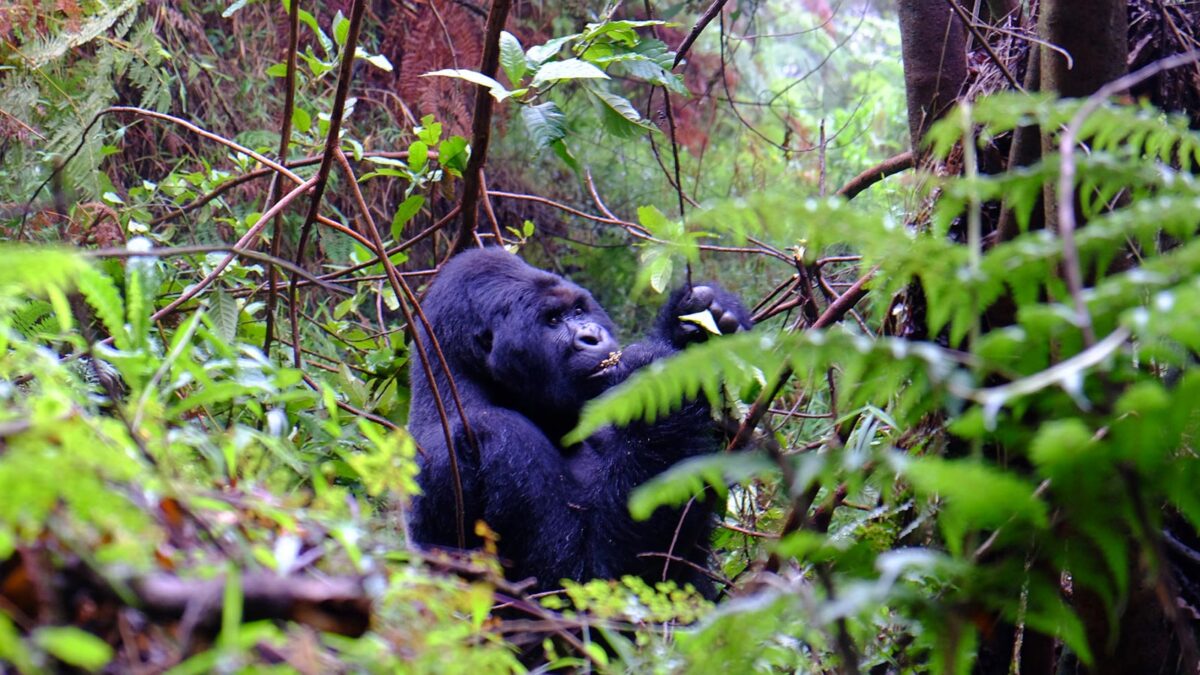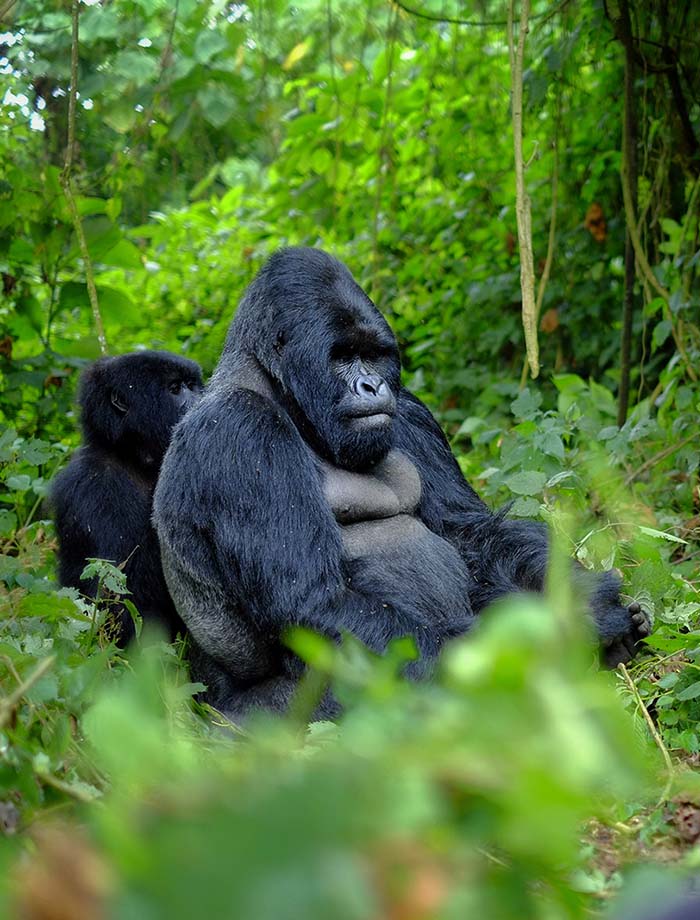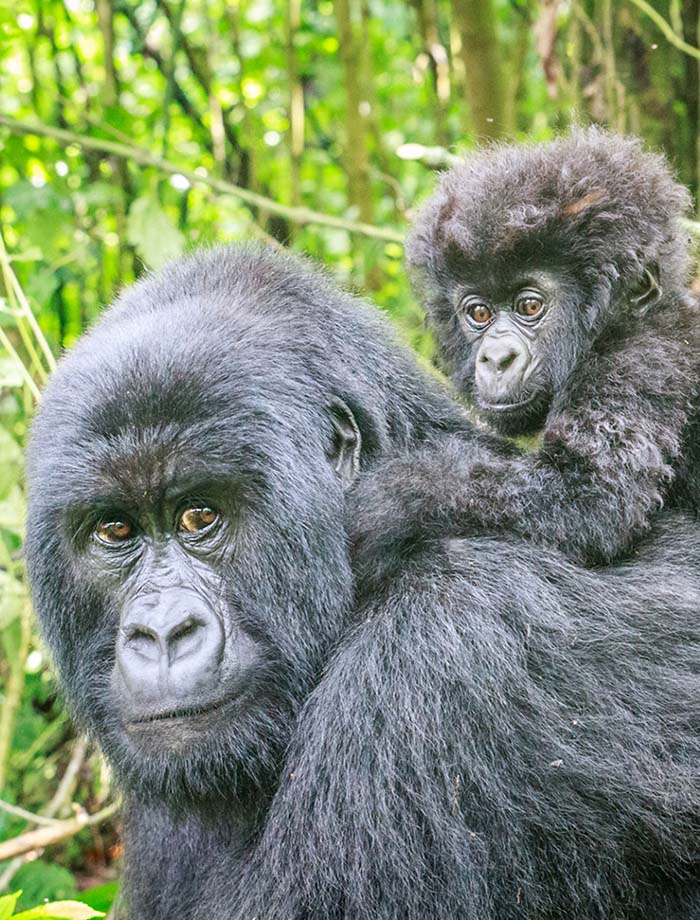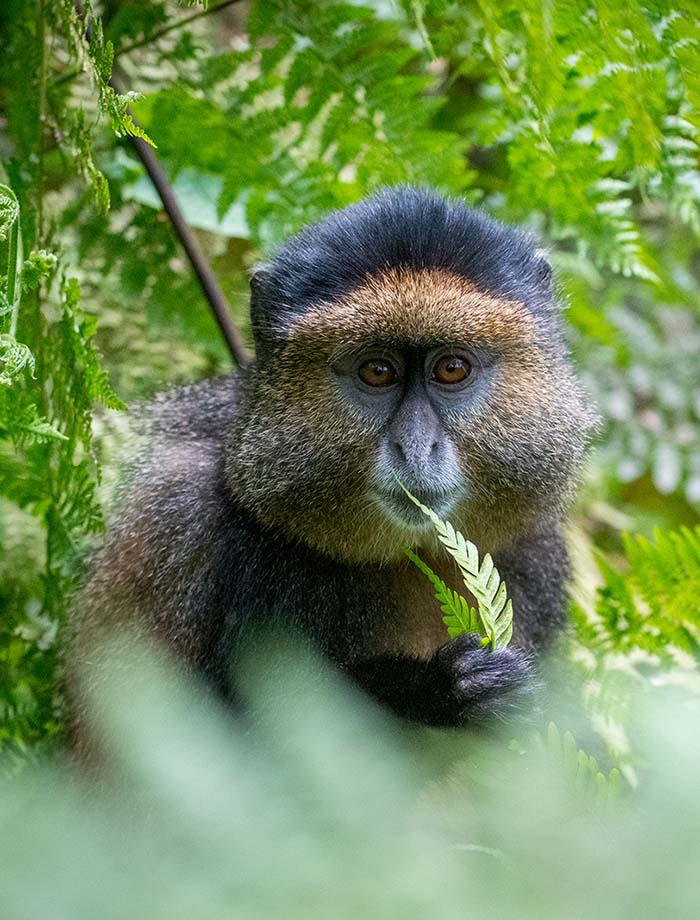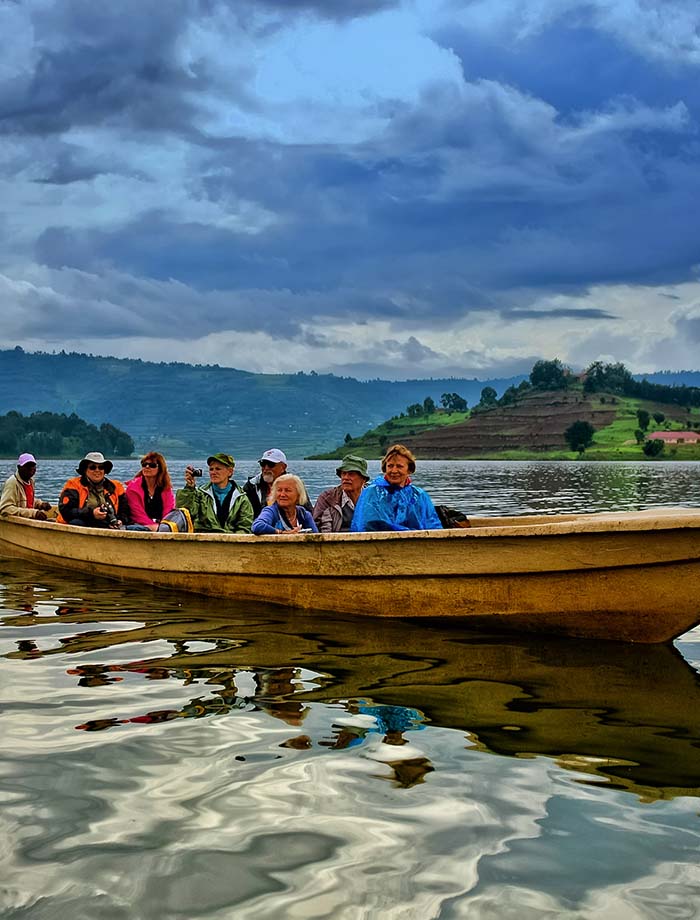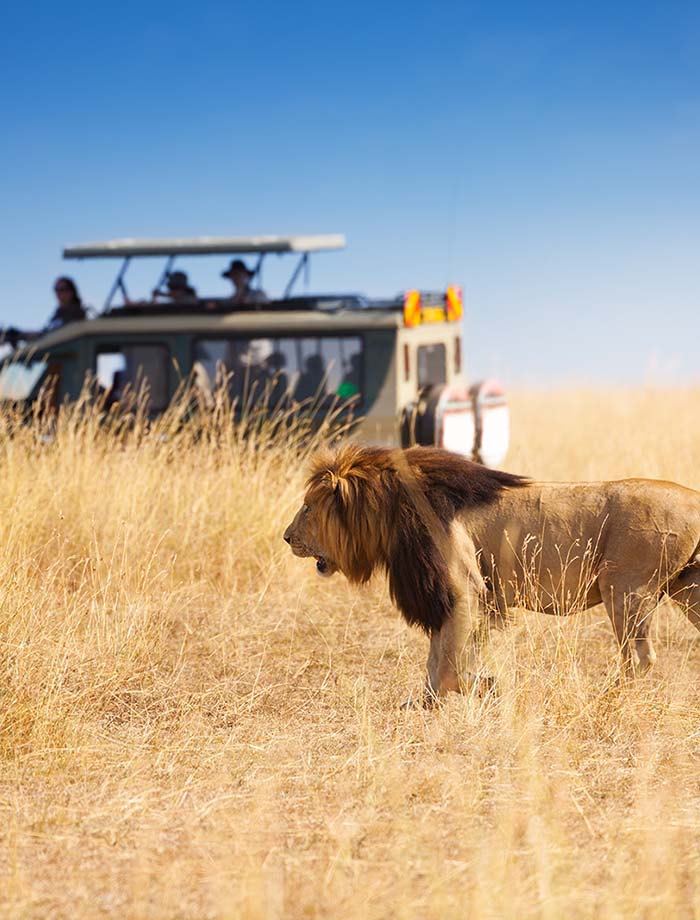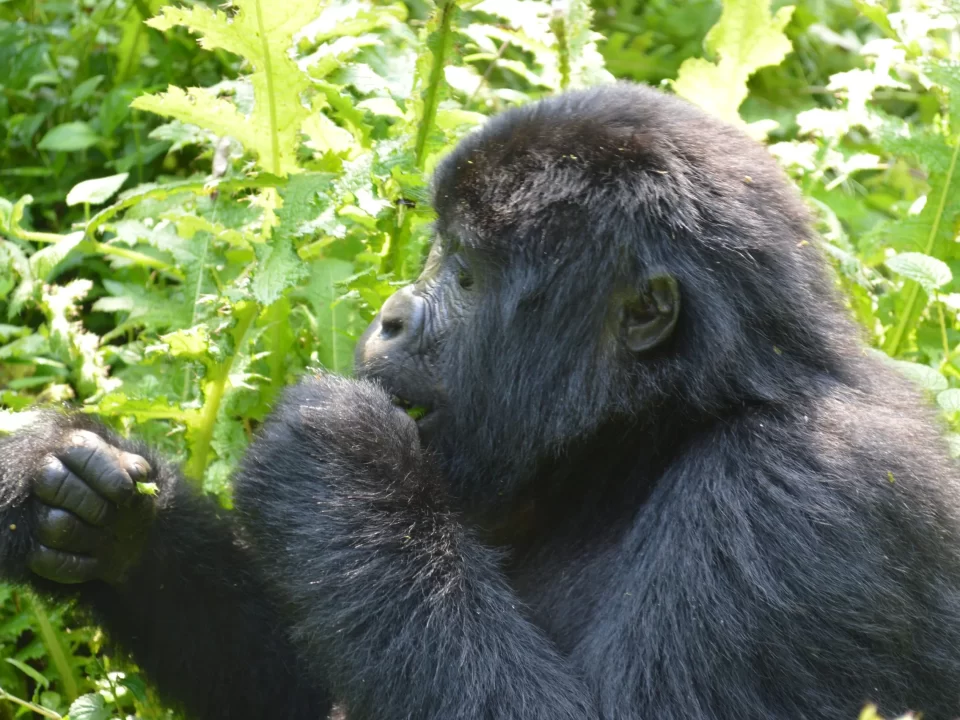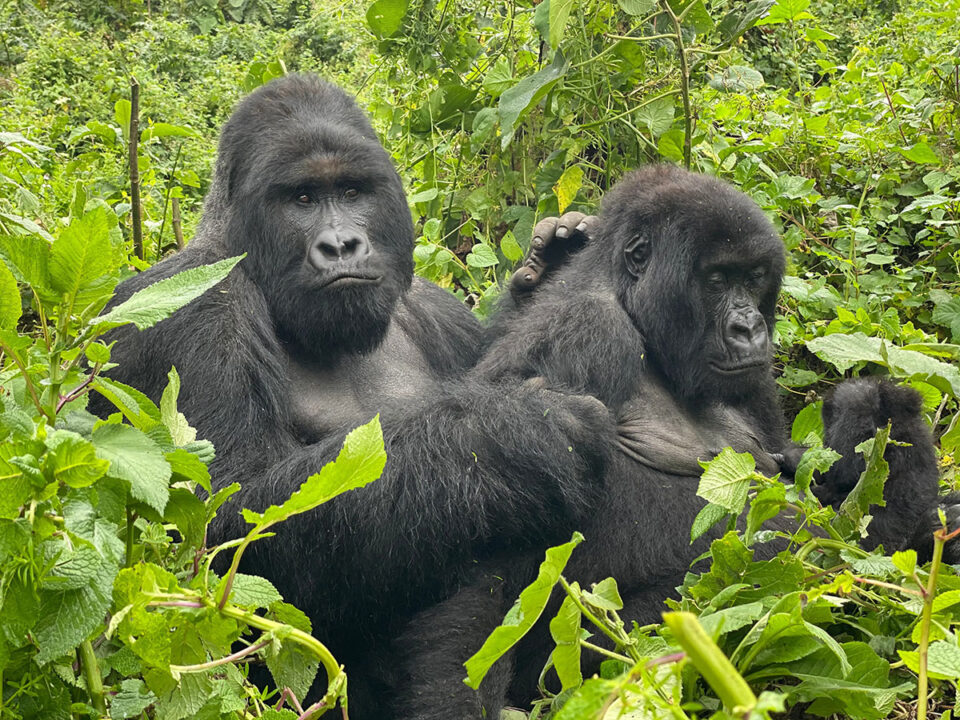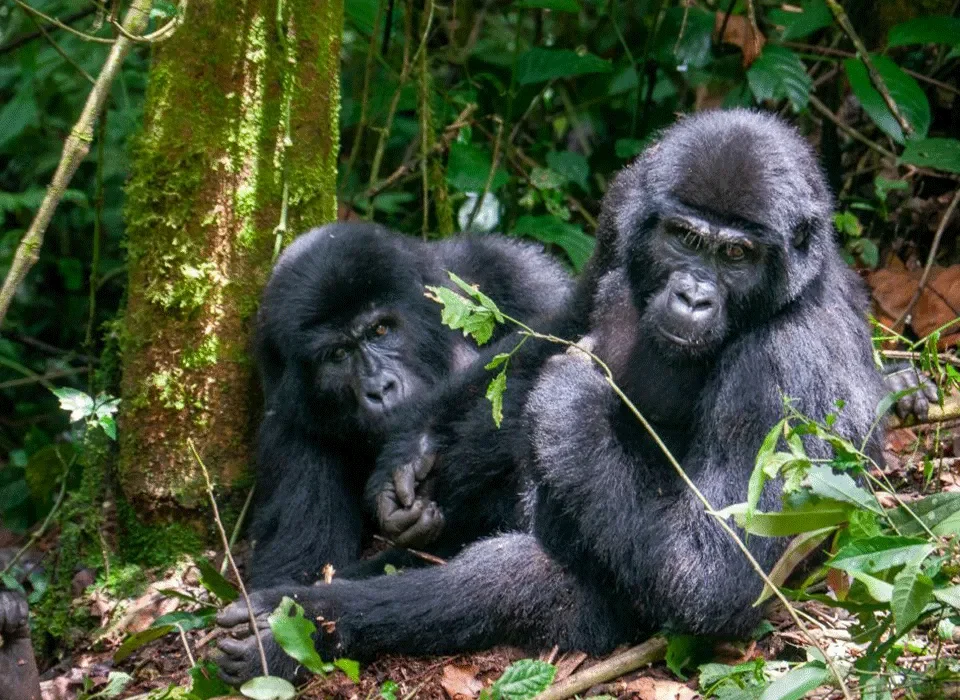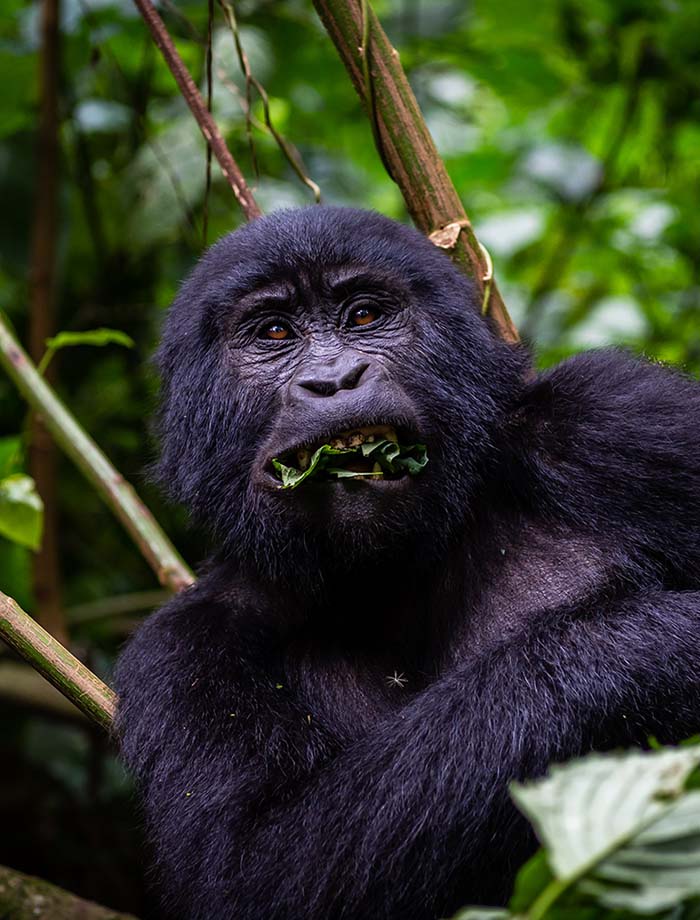
Gorilla trekking in Bwindi vs Mgahinga National Park

Why is Gorilla Trekking very expensive in Rwanda and Uganda
December 15, 2022
Comparing Chimpanzee Trekking Experiences in Uganda and Rwanda
December 16, 2022Gorilla trekking in Bwindi vs Mgahinga National Park
Gorilla trekking is a popular activity in Bwindi Impenetrable National Park and Mgahinga National Park in Uganda. These two national parks are home to more than half of the remaining Mountain Gorilla population in the world. Other places where you can go gorilla trekking include Volcanoes National Park in Rwanda and Virunga National Park in the Democratic Republic of Congo. Overall, these parks offer an unforgettable opportunity to get up close and personal with these incredible animals in their natural habitat. If you are planning to go gorilla trekking in Uganda and are unsure whether to visit Bwindi Impenetrable National Park or Mgahinga National Park, here is a comparison to help you make your decision. Both parks are home to a significant number of Mountain Gorillas and offer a unique opportunity to observe these magnificent animals in their natural habitat. However, there are some differences between the two parks that you may want to consider before making your decision.
While both Bwindi Impenetrable Forest National Park and Mgahinga National Park offer the opportunity to see Mountain Gorillas, there may be some differences in the experience that you have at each park. Here are some factors that you may want to consider when comparing Gorilla trekking in Bwindi vs Mgahinga National Park:
When it comes to vegetation and the trekking experience, there are some differences between Mgahinga National Park and Bwindi Impenetrable Forest National Park. In Mgahinga National Park, the Mountain Gorillas live in the Virunga Mountains, which are covered in bamboo forests. This type of vegetation is relatively open and easy to navigate, making it easier to see the gorillas and take clear photos. In Bwindi Impenetrable Forest National Park, the gorillas live in a dense tropical rainforest with a variety of trees and plants. The thick vegetation can make it more challenging to spot the gorillas and take photos, but it also offers a more immersive and authentic rainforest experience. Ultimately, the type of vegetation and the difficulty of the trek will depend on the specific gorilla group that you visit and the trail that you take.
Both Bwindi Impenetrable Forest National Park and Mgahinga National Park can be easily accessed by road or air. By road, both parks are about 8-9 hours drive from Kampala or Entebbe, with the option to pass through Kabale town to reach Bwindi or Kisoro to reach Mgahinga National Park. Alternatively, you can fly to Kigali in Rwanda and then drive to either park, which takes about 4-5 hours. This option may be attractive for travelers who want to use the East African Tourist Visa, which allows you to visit both Uganda and Rwanda on a single visa. Overall, both parks are easily accessible and offer a range of transportation options to suit different budgets and preferences.
In terms of accommodation, both Bwindi Impenetrable Forest National Park and Mgahinga National Park offer a range of lodges to suit different budgets and preferences. Bwindi Impenetrable Forest National Park is known for its luxury lodges, which offer international-standard facilities and services. These lodges are considered some of the best in Africa and include Gorilla Sanctuary Forest Camp, Clouds Mountain Gorilla Lodge, and Buhoma Lodge. Mgahinga National Park also has a range of lodges, including budget, mid-range, and upmarket options, but the selection may not be as extensive as in Bwindi. Ultimately, the best choice for you will depend on your budget and what you are looking for in terms of comfort and amenities.
In terms of the number of gorilla families available for trekking, Bwindi Impenetrable Forest National Park has more options than Mgahinga National Park. Bwindi has 19 habituated gorilla family groups, which means that 152 gorilla permits are available for trekking each day. In contrast, Mgahinga National Park has only one habituated gorilla family, which means that only 8 gorilla permits are available for trekking each day. This means that it may be easier to get a permit for gorilla trekking in Bwindi, especially during the peak season months when demand is high. However, both parks offer a unique and unforgettable experience, and the right choice for you will depend on your personal preferences and availability of permits.
The distance that you will need to walk to see gorillas in Bwindi Impenetrable Forest National Park and Mgahinga National Park can vary depending on the specific gorilla family that you are allocated on the day of your trek. In both parks, the allocation of gorilla families is based on the interests and physical fitness of the individual trekker. If you want a shorter trek, you can request a family that is located closer to the starting point of the trail. If you are interested in a longer or more challenging trek, you can request a family that is further away. However, it is important to note that the behavior of the gorillas can affect the distance that you need to walk. If the gorillas move to a different location while you are tracking them, you may need to walk further to keep up with them. Overall, the distance that you will need to walk will depend on a range of factors and can vary from one trek to the next.
One advantage of visiting Bwindi Impenetrable Forest National Park for gorilla trekking is its proximity to other national parks. With just a 2-hour drive, you can visit Queen Elizabeth National Park for big game wildlife viewing, and a 4-hour drive will take you to Kibale Forest National Park for chimpanzee trekking. This makes it easy to combine your gorilla trek with other adventures in the area, adding even more variety and excitement to your trip. In contrast, Mgahinga National Park is located in a more remote area, which may make it more difficult to visit other national parks in the same trip. However, both parks offer a unique and rewarding experience, and the right choice for you will depend on your personal preferences and itinerary.
Best time for gorilla trekking in Bwindi impenetrable National Park and Mgahinga National Park
Both parks are open for gorilla trekking throughout the year, but it is important to note that the forest is a tropical rainforest and can receive rain at any time. The best months for gorilla tracking are generally considered to be June to August and December to February, as these months typically receive the lowest levels of rainfall and the forest is less slippery. On the other hand, traveling during the months of March to May and November may result in higher levels of rainfall, but some lodges may offer discounts on accommodations during these times. It is always best to check with the individual park or lodge for the most current information on weather and availability.
Suggested Gorilla Safari Ideas
The tours featured throughout our website are intended to give you ideas for what’s possible when you travel with us. Treat them simply as inspiration, because your trip will be created individually by one of our specialists to match your tastes and budget.

